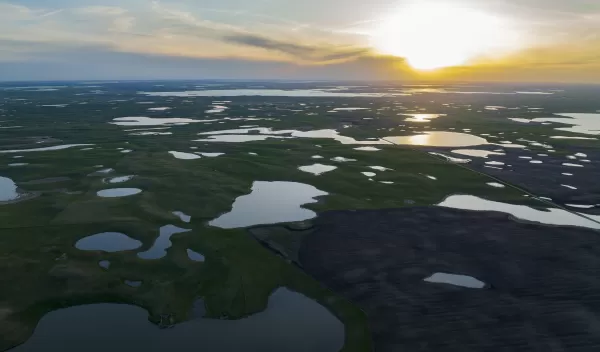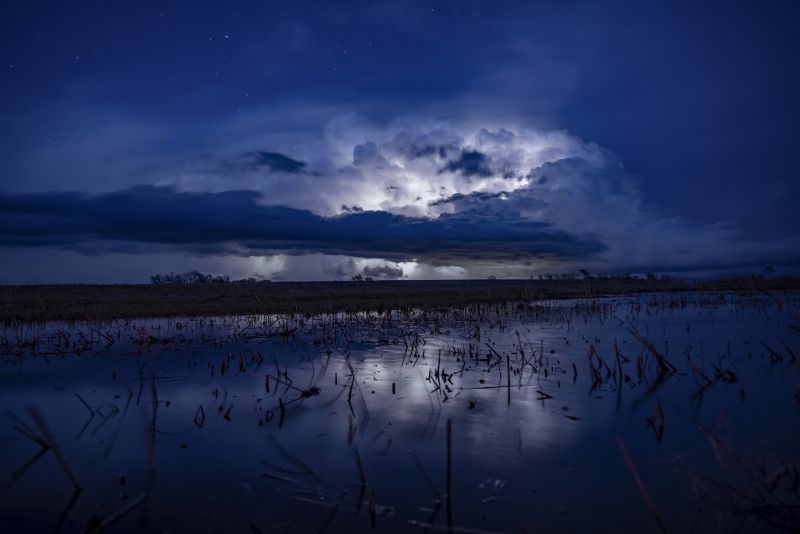
Prolific potholes in the prairie star in award-winning short film
Most of us think potholes are something to avoid.
However, some potholes are worth protecting. The U.S. National Science Foundation is funding researchers to study prairie pothole wetlands, which are ecologically and economically important, but under threat from climate change and land use. The team’s short film on its work recently won the 2024 Grand Prize for Environmental Communications from the American Academy of Environmental Engineers and Scientists.
Prairie pothole wetlands include millions of water pools carved out of grasslands spanning from Canada to the upper Midwestern states. These unique features formed when glaciers retreated during the Pleistocene, or the last Ice Age, and left behind soft clay, silt, and sand, which formed depressions when the area filled with water.
Now, bulrushes and cattails grow on the edges of the potholes while submerged and aquatic plants live in the middle. The potholes are home to more than 50% of North American migratory waterfowl and host diverse reptiles and invertebrates.
Bill Arnold, a professor at the University of Minnesota, and his team are rowing out to the middle of the potholes and collecting samples to study how these vital habitats are reacting to climate change.
“You’re outside and you can see the wildlife, feel the rain, feel the wind, and be part of the environment rather than just our day-to-day of classroom, office, laboratory,” Arnold says in the film.
Warmer temperatures can cause the potholes to release carbon dioxide and methane, further contributing to climate change. The team is also researching how the chemistry and microbiology of these wetlands affect their ability to store and process carbon and effectively filter fertilizer and pollutant runoff.

